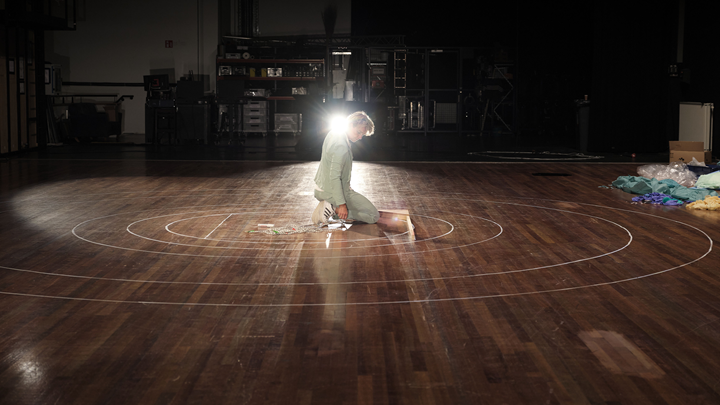About the original artwork
In 2019 Dutch spatial artist Maria Koijck was diagnosed with breast cancer. After having undergone a mastectomy, she had breast reconstruction surgery in 2021. The original film was created by Maria Koijck and her daughter, filmmaker Eva Glasbeek, with the purpose to raise awareness around surgical waste. In the artwork Maria has included the actual waste from her full breast reconstruction procedure, including the postoperative care. Hence the large number of gloves visible in the film. There is also an unusually large number of surgical gowns included in the artwork. The reason for this being that the original surgery was performed in a university hospital, with students present.
hidden1hidden2


hidden1hidden2
The recreation

The recreation of Maria Koijcks artwork was conducted at the original location in Groningen, The Netherlands, in 2023, using a combination of surgical waste and new items from a customised, pre-sterilised Mölnlycke ProcedurePak trays. Essentially, we replaced all single-packaged items (including packaging) that was used in the operating theatre with the contents of the ProcedurePak trays. All other parts of the artwork, that could not be directly impacted by the ProcedurePak solution, were recreated to exactly match Maria Koijck’s original.
Recreating the artwork was Maria Koijck herself and behind the camera was, once again, her daughter Eva. Like in the original film, the music is composed by young, Montreal based composer Lucas Raimbault.

hidden1hidden2
Before and after

The recreation of Maria Koijck’s artwork was done primarily for illustrative purposes and is as such not based on scientific evidence. Therefore, we can neither claim nor report the amount of waste that would have been reduced in this particular case. Nonetheless, to provide a relevant visual representation of the result, we have tried to make our recreation as honest and true to reality as possible.
In our recreation film, we claim that the ProcedurePak solution can reduce surgical packaging waste by up to 90%. The evidence supporting that claim, along with other benefits of our customised procedure trays, can be found in this report

hidden1hidden2
What happened to the waste from the recreation?

All contaminated perioperative waste acquired and used have been disposed of adequately, according to hospital practice. Non-contaminated single-use instruments from the Mölnlycke procedure tray have been collected to be used for training purposes.







